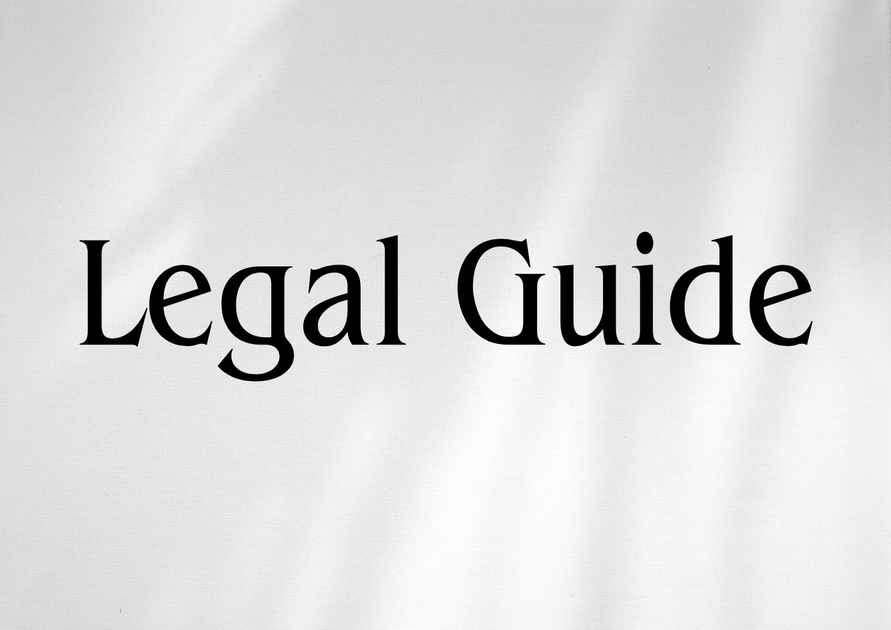Introduction: Navigating Arbitration Risks in Cross-Border Contracts
In today’s increasingly interconnected GCC business environment, the use of arbitration clauses remains a hallmark of commercial agreements, especially in contracts involving Saudi Arabian entities. Arbitration is widely embraced for its efficiency, neutrality, and enforceability. However, not all arbitration clauses are fit for purpose. Pathological arbitration clauses—those that are ambiguous, ill-drafted, or contradictory—pose significant legal risks, potentially undermining dispute resolution efforts and exposing parties to costly litigation. For UAE businesses, executives, in-house counsel, and HR managers entering into agreements governed by Saudi law or involving Saudi counterparts, understanding these risks is critical. The 2025 updates to UAE arbitration and contract law, alongside evolving Saudi arbitration jurisprudence, heighten both opportunity and risk. This article provides an in-depth, consultancy-grade guide on pathological arbitration clauses in Saudi contracts, offering legal insights, compliance strategies, and professional analysis tailored to stakeholders in the UAE.
Table of Contents
- Saudi Arbitration Legal Framework and Its Impact on GCC Transactions
- Defining Pathological Arbitration Clauses: Legal and Practical Considerations
- Core Legal Risks Associated with Pathological Arbitration Clauses
- Regulatory Landscape: Comparing Saudi and UAE Arbitration Laws
- Case Studies: How Pathological Clauses Undermine Dispute Resolution
- Risk Mitigation and Best Practice Drafting Strategies
- Compliance Checklist for UAE Companies in Saudi Contracts
- Conclusion: Adapting to Legal Evolution and Strengthening Contractual Certainty
Saudi Arbitration Legal Framework and Its Impact on GCC Transactions
The Saudi Arbitration Law: An Overview
Saudi Arabia’s arbitration landscape is governed primarily by the Saudi Arbitration Law promulgated by Royal Decree No. (M/34) of 2012 (“SAL 2012”), as subsequently amended. Influenced by UNCITRAL principles, the SAL 2012 aims to modernize arbitration practices and provide a degree of certainty and enforceability. Key features of the law include party autonomy, clear procedural rules, and enhanced recognition of foreign arbitral awards, subject to public policy exceptions. For UAE companies, these features create a robust but nuanced environment for cross-border contracting.
The Continuing UAE–Saudi Commercial Nexus
The UAE and Saudi Arabia are the two largest economies in the GCC. Every year, hundreds of UAE-based organizations enter into contracts governed by Saudi law or with Saudi counterparties. As investment and trade deepen, the proper drafting and enforcement of dispute resolution mechanisms become increasingly significant, particularly given Saudi courts’ evolving yet sometimes unpredictable approach to arbitration clauses.
Why UAE Legal Consultancy Is Essential
Given variances in enforcement philosophy, legal terminology, and judicial practice between the UAE and Saudi Arabia, specialist consultancy is not just beneficial—it is essential. The risk of unenforceable or ambiguous arbitration clauses can cause costly, years-long disputes and business disruption. The 2025 amendments to UAE Federal Decree-Law No. 6 of 2018 on Arbitration (as amended) further harmonize cross-border recognition but also impose compliance obligations on UAE-based contracting parties.
Defining Pathological Arbitration Clauses: Legal and Practical Considerations
What Is a Pathological Arbitration Clause?
A pathological arbitration clause is characterized by imprecise, conflicting, or incomplete wording that impairs its proper operation or enforceability. These flaws may relate to the choice of institution, seat of arbitration, applicable law, language, or appointment procedures. In Saudi contracts, such flaws can be particularly problematic where local enforcement depends on strict compliance with statutory and Shariah principles.
Legal Characteristics and Common Pathologies
- Ambiguous appointment mechanism: Unclear specification of appointing authority or selection process.
- Internal contradiction: Clauses that name multiple, conflicting forums or laws.
- Excessive limitations: Conditions precedent that are impossible or impractical to fulfill.
- Omission of mandatory procedural features: Absence of a defined seat or applicable procedural law.
- Reference to non-existent or non-consenting institutions: Naming an arbitral institution not operating in Saudi Arabia or not authorized to administer the dispute.
Why Are Pathological Clauses an Acute Risk in Saudi Contracts?
Saudi courts, while increasingly supportive of arbitration, remain strict in interpreting whether an arbitration clause sufficiently evidences the parties’ intent. Ambiguous or incomplete clauses may be declared void, subjecting parties to litigation in Saudi courts—often a result neither side desires, given concerns over neutrality and enforcement. Furthermore, Saudi courts historically require strict adherence to both public policy and Shariah principles, amplifying the risks posed by poorly drafted clauses.
Core Legal Risks Associated with Pathological Arbitration Clauses
Non-Enforcement and Jurisdictional Paralysis
The primary risk is that a pathological clause prevents proper constitution of the arbitral tribunal or renders the clause inoperative or unenforceable. Saudi law (Article 15 of SAL 2012) provides that the arbitral tribunal’s jurisdiction is dependent on a valid arbitration agreement. Ambiguous or unworkable clauses allow recalcitrant parties to challenge jurisdiction, leading to protracted pre-dispute litigation or a default to Saudi court jurisdiction.
Loss of Party Autonomy
One of arbitration’s main attractions is party autonomy—freedom to design a bespoke dispute resolution process. A pathological clause undermines this autonomy by transferring decision-making to courts or arbitral institutions, or by defaulting to statutory rules that may not reflect the parties’ intentions.
Delays, Costs, and Exposure to Unwanted Forums
Unclear clauses can result in costly satellite litigation, delays in dispute resolution, and increased legal bills. Furthermore, parties may find themselves subject to proceedings in a forum that is less favorable, less efficient, or unfamiliar—potentially the very Saudi courts arbitration was meant to avoid.
Challenges to Enforceability of Awards
Even if an arbitral tribunal is constituted and makes an award, a pathological clause may still create grounds for the unsuccessful party to resist enforcement—both in Saudi Arabia and abroad. Article 55 of the Saudi Enforcement Law empowers Saudi courts to reject enforcement of arbitral awards for non-compliance with procedural requirements or public policy. The same applies to UAE courts under the 2025 amendments to Federal Decree-Law No. 6 of 2018.
Compliance and Reputational Risks
Should a contract fall foul of Saudi enforcement standards due to a pathological clause, affected companies may face compliance reviews, regulatory scrutiny, and reputational damage. For publicly listed UAE companies, there are also risks associated with disclosure, corporate governance, and the obligations imposed by the UAE Ministry of Human Resources and Emiratisation related to contract management and cross-border transactions.
Regulatory Landscape: Comparing Saudi and UAE Arbitration Laws
Overview of Key Statutes and Provisions
The enforcement and interpretation of arbitration clauses in Saudi Arabia and the UAE are governed by the following cornerstone legislation:
- Saudi Arbitration Law (SAL) 2012 and its 2020 guidelines (Saudi Center for Commercial Arbitration, SCCA)
- UAE Federal Decree-Law No. 6 of 2018 on Arbitration (as amended in 2025)
- UAE Cabinet Resolution No. 57 of 2018 on the Regulation of Federal Law Concerning Arbitration
- UAE Civil Transactions Law (Federal Law No. 5 of 1985)
Comparative Table: Key Features of Saudi and UAE Arbitration Laws
| Feature | Saudi SAL 2012 | UAE Arbitration Law 2018/2025 |
|---|---|---|
| Form of Agreement | Must be in writing; strict textual requirements | Must be in writing; can be in any written instrument, including electronic |
| Party Capacity | Strict capacity rules under Shariah; public entities sometimes restricted | Broader capacity; some restrictions for government contracts |
| Choice of Law | Permitted, subject to public policy and Shariah | Liberal party autonomy, except for mandatory principles |
| Institutional v. Ad hoc | No restriction, but SCCA is preferred; foreign institutions possible with caveats | No restriction; broad recognition of international institutions |
| Enforcement of Awards | Strict scrutiny for procedural regularity and public policy | High enforceability, subject to procedural compliance under Decree-Law No. 6/2018 |
| Language | Arabic preferred; translation often required | Any language permitted if expressly agreed |
Key 2025 Updates Affecting UAE Parties to Saudi Contracts
The 2025 amendments to the UAE Federal Decree-Law No. 6 of 2018 introduce a stricter regime for the recognition of foreign arbitral awards, requiring demonstrable compliance with both mandatory UAE and foreign procedural laws. This has direct impact on the drafting and operability of arbitration clauses in contracts between UAE and Saudi entities.
Case Studies: How Pathological Clauses Undermine Dispute Resolution
Case Study 1: Contradictory Institutional References
Background: A UAE-based construction company entered into a major infrastructure contract in Riyadh, providing that “any dispute shall be settled by arbitration under the rules of the International Chamber of Commerce (ICC) in accordance with Saudi law, with the arbitration to be seated in Riyadh and managed by the SCCA.”
Problem: The clause refers to both ICC and SCCA as administering institutions, with unclear precedence. Upon escalation of a dispute, each institution declines to administer the case, citing lack of exclusive designation.
Outcome: The clause is declared inoperative by the Saudi court, and the dispute is referred to state litigation in Saudi courts. Both parties lose the intended neutrality and efficiency of arbitration, with significant financial and time costs incurred.
Case Study 2: Omission of Mandatory Institutional Consent
Background: Two manufacturing companies, one based in Dubai and the other in Jeddah, agree that “disputes shall be arbitrated in Dubai under the London Court of International Arbitration (LCIA) rules.” LCIA does not have a physical or legal presence in Saudi Arabia.
Problem: The Saudi company later argues that the LCIA lacks capacity to administer an arbitration in Saudi Arabia without official consent—a position supported by Saudi arbitration guidelines.
Outcome: The Saudi court refuses to recognize the clause, negating the parties’ agreement and sending the matter to Saudi litigation.
Case Study 3: Ambiguous Language and Seat
Background: A joint venture agreement provides: “If the parties are unable to resolve a dispute amicably, the issue shall be referred to an arbitrator agreed by both parties, following international best practices.” No seat, governing rules, or nomination mechanism is specified.
Problem: In the absence of a clear appointment mechanism or arbitral seat, parties fail to agree on tribunal composition or procedural rules, generating a deadlock.
Outcome: The clause is deemed too vague to enforce, and the dispute proceeds to contentious litigation—contrary to the parties’ expectation of a neutral, prompt resolution.
Analysis of Key Lessons
These case studies demonstrate that even sophisticated parties can fall victim to materially defective dispute resolution clauses. The lessons are clear: every element—appointment, seat, language, forum, and applicable law—must be articulated with clarity and precision to safeguard enforceability under both Saudi and UAE law.
Risk Mitigation and Best Practice Drafting Strategies
1. Prioritize Clarity and Completeness
Ensure the clause explicitly stipulates:
- The institution (e.g., “SCCA in Riyadh” or “ICC in Paris”)
- The seat of arbitration with city and country
- Governing arbitral rules
- Process for appointment of arbitrators
- The language of the proceedings
2. Reconcile Institutional and Jurisdictional Requirements
Only select institutions with actual authority or operational presence in Saudi Arabia, unless parties expressly agree to a foreign venue with due consideration of enforcement risks. Always verify institutional consent and procedural feasibility before including named arbitrators or bodies.
3. Harmonize with UAE and Saudi Public Policy
Review contractual language to ensure compliance with both Shariah principles (mandatory under Saudi law) and UAE public policy provisions (as per UAE Federal Decree-Law No. 6 of 2018, Article 53(2)). Beware of provisions that could be construed as contrary to these requirements, such as unlimited damages or penalty clauses.
4. Incorporate Fallback Mechanisms
Add clear fallback or default mechanisms in the event of party deadlock on arbitrator appointment, ensuring continuity rather than litigation safeguards are met. Specify who will act as a nominating authority (e.g., SCCA or a local court).
5. Regularly Update Standard Clauses
Periodically review and update contract templates to reflect evolving legal standards, official guidelines, and institutional requirements—particularly following legislative changes such as the 2025 UAE updates.
Sample Model Arbitration Clause for Saudi Contracts
Legal consultants often recommend the following format for Saudi contracts:
“Any dispute, controversy, or claim arising out of or relating to this contract shall be finally settled by arbitration administered by the Saudi Center for Commercial Arbitration (SCCA) in accordance with its Arbitration Rules. The seat of arbitration shall be Riyadh, Kingdom of Saudi Arabia. The tribunal shall consist of three arbitrators. The language of arbitration shall be Arabic (or English, as mutually agreed).”
This example minimizes ambiguity and is compliant with both Saudi and UAE enforcement expectations.
6. Specialist Legal Due Diligence
Engage experienced UAE and Saudi legal counsel to vet all cross-border contracts prior to execution. This includes a review of the full dispute resolution suite, not merely arbitration wording, with reference to practices endorsed by the UAE Ministry of Justice and Federal Legal Gazette.
Suggested Visual:
Visual suggestion: Flow diagram illustrating the process for verifying and drafting enforceable arbitration clauses, from legal review to institutional confirmation
Compliance Checklist for UAE Companies in Saudi Contracts
To proactively manage risks associated with pathological arbitration clauses, UAE entities contracting in Saudi Arabia should embrace the following compliance checklist:
| Compliance Item | Status | Notes |
|---|---|---|
| Clause drafted/verified by UAE and Saudi qualified counsel | ✓ | Document legal review as part of contract file |
| Institution named has legal authority in Saudi Arabia | Check SCCA or other approved bodies | |
| Seat, language, and applicable rules are clearly stated | ✓ | Identify fallback mechanisms for deadlock |
| Clause harmonized with Shariah and Saudi public policy | Review for prohibitions, penalty provisions | |
| Updated in line with UAE Federal Decree-Law No. 6/2018 (2025) | ✓ | Ensure compliance with UAE enforcement and recognition requirements |
Conclusion: Adapting to Legal Evolution and Strengthening Contractual Certainty
For UAE-based businesses, the risks posed by pathological arbitration clauses in Saudi contracts are real and consequential—ranging from increased cost, delay, and loss of party autonomy, to compromised enforceability and regulatory exposure. The legislative and judicial environments in both the UAE and Saudi Arabia are dynamic. With the UAE’s 2025 updates emphasizing rigorous standards for recognition and enforcement of foreign arbitral awards, and Saudi Arabia’s continuous reform of its arbitration and enforcement laws, the pressure on parties to “get the clause right” is only increasing.
Best practices demand specialist legal review, meticulous drafting, and ongoing regulatory monitoring. Businesses are strongly advised to: (1) conduct regular contract audits; (2) use clear, precise, and updated model clauses; (3) consult local counsel; and (4) maintain rigorous compliance documentation. Those who neglect such measures risk both legal and commercial setbacks.
As the legal frameworks continue to evolve in 2025 and beyond, proactive compliance and commitment to precision will distinguish successful, resilient businesses in the region’s cross-border landscape. Now is the time for companies to strengthen contract management policies and seek the expert guidance of UAE legal consultancy professionals—ensuring that dispute resolution clauses serve as engines of certainty, not vessels of ambiguity.
References and Official Sources
- Saudi Arbitration Law 2012 (Royal Decree No. M/34)
- Saudi Center for Commercial Arbitration Guidelines (2020)
- UAE Federal Decree-Law No. 6 of 2018 on Arbitration (as amended in 2025)
- UAE Cabinet Resolution No. 57 of 2018
- Ministry of Justice, KSA: moj.gov.sa
- UAE Ministry of Justice: moj.gov.ae
- Federal Legal Gazette: Federal Legal Gazette
- UAE Government Portal: u.ae




